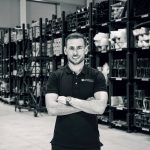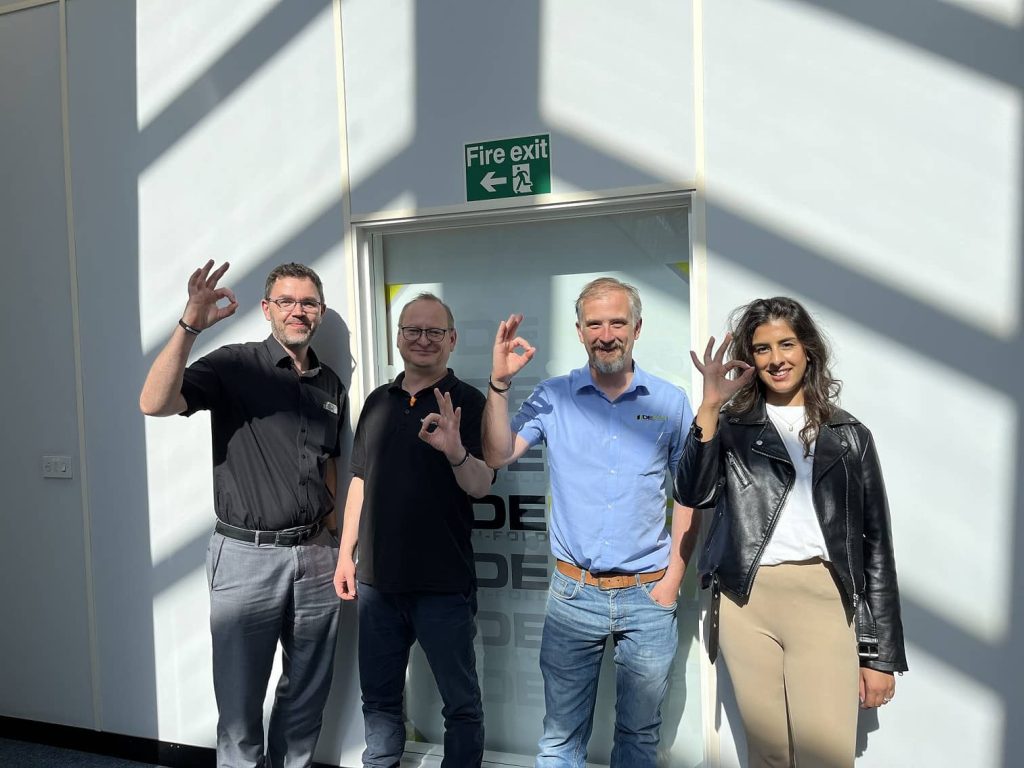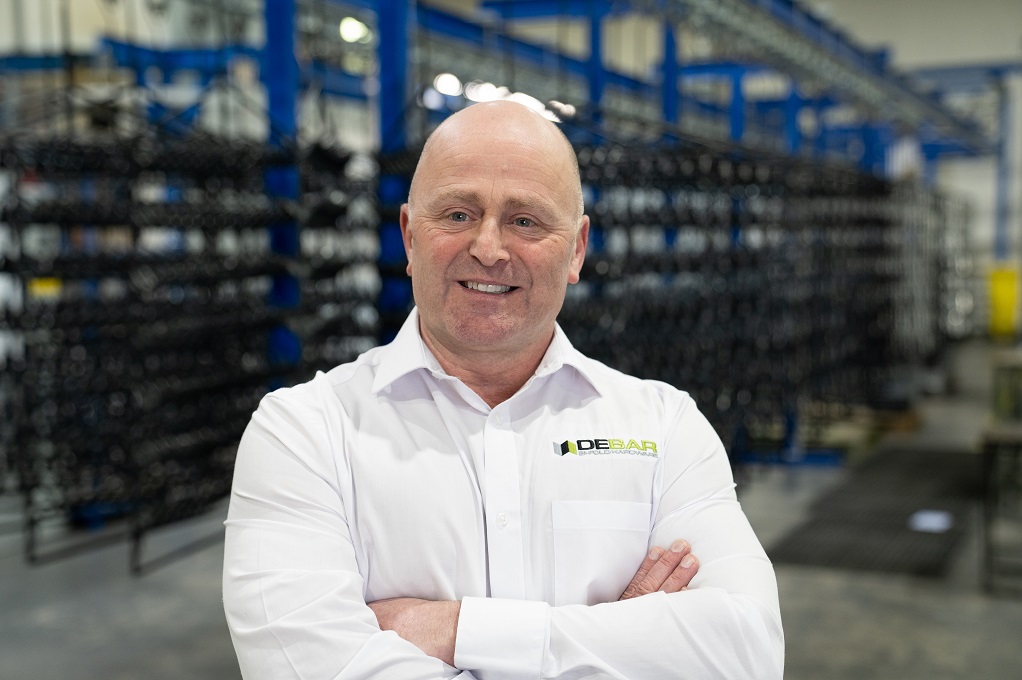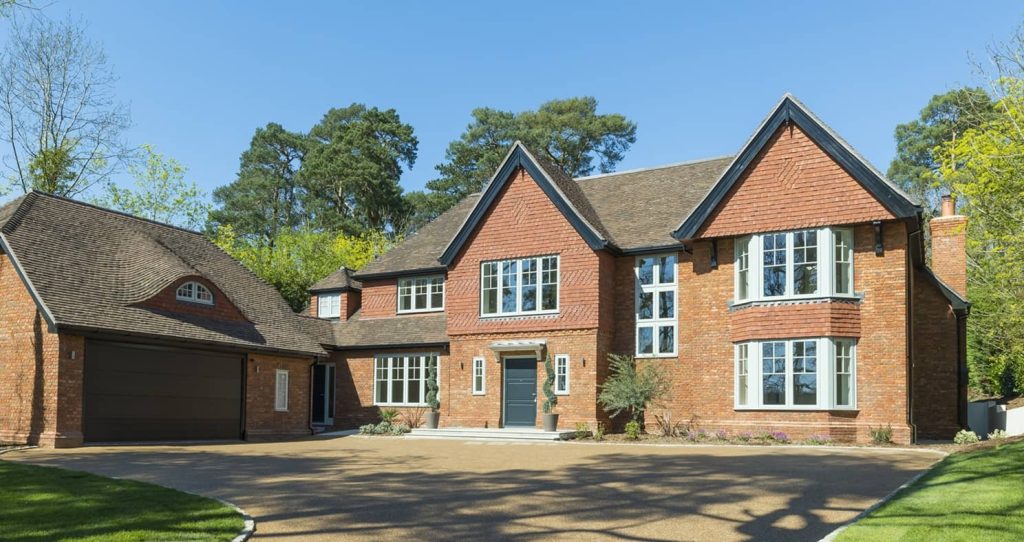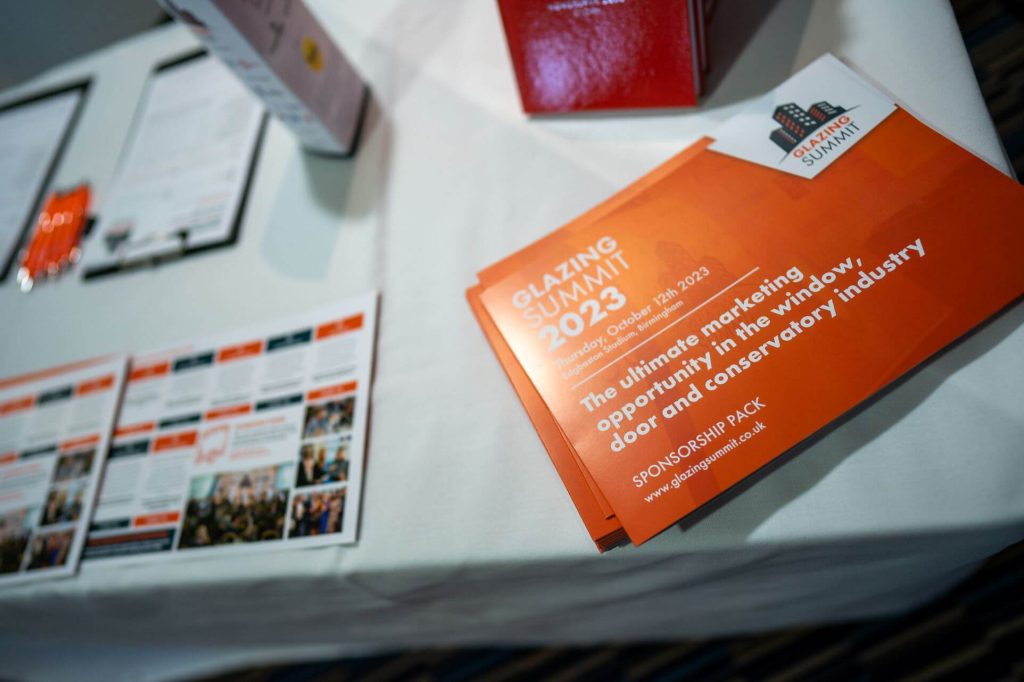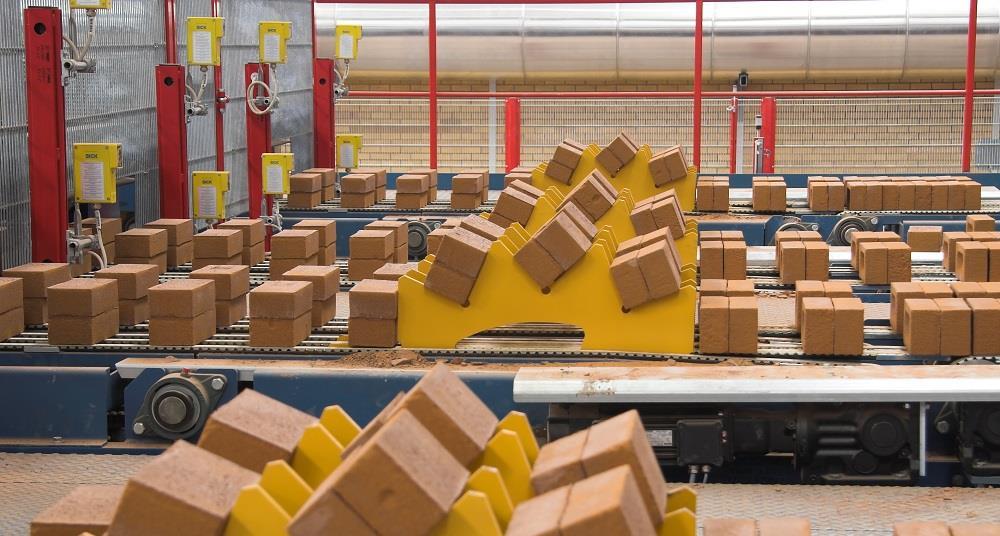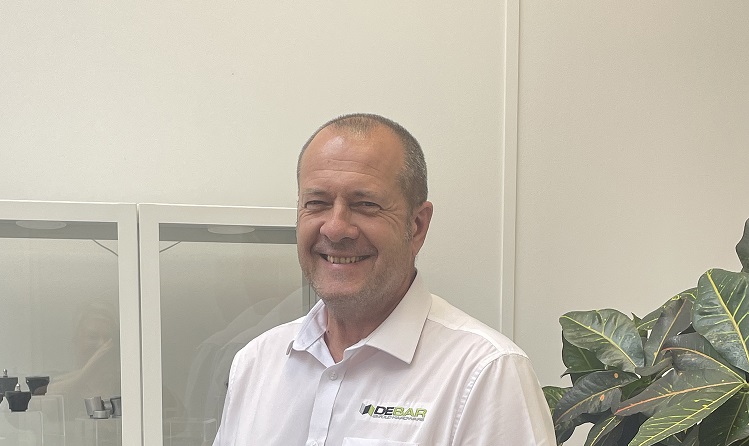Review: Some of the industry’s most sustainable products
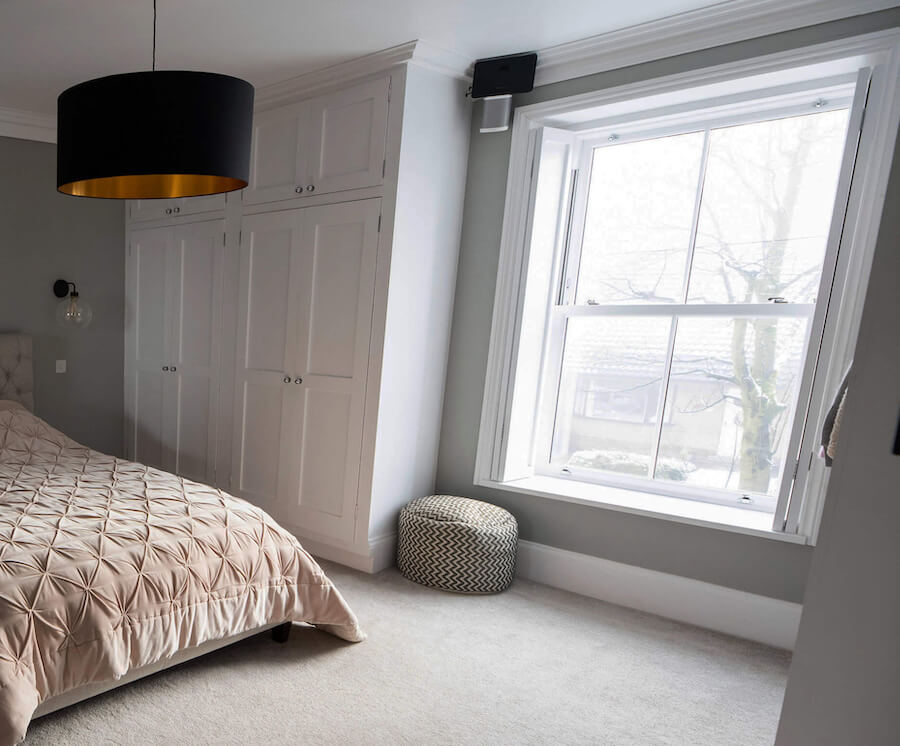

The UK construction industry is a major contributor to levels of air, water and ground pollution. It is responsible for nearly 4% of particulate emissions and more water pollution incidents than any other industry.
Those shocking statistics are a stark reminder that government targets for a climate neutral UK by 2050 are ambitious to say the least.
Innovative technology looks set to provide much needed solutions for an industry looking for new, greener materials and products. Several UK construction industry companies have taken it upon themselves to try and create cutting-edge yet environmentally conscious building materials for the future.
With that in mind, what are the sustainable products that architects, specifiers, builders and quantity surveyors should be looking out for? Here we speak to several businesses that create products designed specifically to reduce the carbon footprint of both commercial and residential structures.
Infra-red Heating Solution
By Energy Carbon
This innovative young business from Sussex is committed to providing low-energy heating products.
Tell us about your product. What does it do?
Energy Carbon provides a fast, cost-effective and energy efficient heating technology developed by experts from Germany’s University of Stuttgart.
Thin heating fleece just 0.4mm thick can be plastered into the ceiling or sited behind the plaster board to provide the same safe, healthy infra-red heat babies receive in incubators.
We cover around 60% of the ceiling, which means that occupants feel the warmth throughout a room rather than in specific areas as with infra-red panels. We can even cut holes for lighting with no issues.
What’s more, it needs no specialist trade to install – just a plasterer or dry liner and an electrician.
What makes your product sustainable/energy efficient?
Most conventional heating works on the principle of convection.
Radiators draw cold air from the floor, pull it across the heat source, which causes it to heat up and rise to the ceiling. When that air cools, it falls, and the cycle begins again.
The problem with that is it takes time. The process needs to repeat until the whole air mass in a room has warmed up.
Infra-red is much quicker and more economical – occupiers feel the benefit sooner, and it uses less electricity as a result.
It’s also highly durable and long-lasting with a design life in excess of 50 years – other alternatives will likely need replacing several times between now and 2050.
What were and are the challenges you faced when developing the product?
We’ve been passionate about the potential of infra-red technology for years, but in the early days it was frustrating – the implementation was often very poor.
We always used to say, ‘we wish they made this in Germany’ – we knew that, given Germany’s history of engineering excellence, and rigorous testing and accreditation regimes, the Germans would do the concept justice.
But then, we found that a German manufacturer had taken up the infra-red gauntlet. We got in touch, and managed to secure the UK distribution rights.
Modular Panel System
By Green Life Buildings (GLB)
Green Life Buildings are taking small but significant steps on the path to providing top quality construction materials with less impact on our environment. Managing Director, Chris Williams talks to us about GLB’s innovative building products.
Tell us about your product?
The GLB advanced building system is an innovative, lightweight, adaptable, and exceptionally durable sandwich panel system used for walls, floors and roof. It uses advanced insulant core technology to deliver an affordable alternative form of construction material.
How is it sustainable/energy efficient?
The rigid panel is more than 90% air. It is made up of two galvanised welded steel wire meshes joined by connectors and enclosing an expanded polystyrene sheet. Because of this, it provides the best carbon footprint per U value. Just 80mm of our low carbon concrete provides a structural wall with a carbon footprint of only 33kg/m2.
Each home built using the system can reduce energy expenditure and carbon emissions by at least 65% compared to traditional builds when built to passive house U values.
Do you have plans to develop the product further?
It’s more a case of re-invention, with 35 years of product knowledge, GLB and M2 can adapt to the UK needs. With our digital manufacturing capability, we can adapt to regulation changes easily. One example of this is the creation of our hybrid panel.
This panel removes the combustible element from external walls above 18m yet still provides an insitu build option. This is important for us because it provides options to our contractors using techniques they’re already familiar with.
Will you be launching any other similar products?
Outside of the hybrid panel, we won’t be producing any new sustainable products for a while. Our focus is platforming the product and to demonstrate the positive difference it can make to builds. An added benefit to our panels is the thermal mass of the walls can incorporate low voltage heat mats that act as radiators.
We need the 80mm concrete for structural integrity but why let it do just one job when it can also be solar shading and thermal store.
Did you face any challenges when developing the product?
The technology was developed by EMMEDUE in Italy and has been used to construct over 1 million buildings all over the world.
Despite this success, our initial challenge has been convincing those in the decision-making process (such as heads of lending and quantity surveyors of the systems worth) that it’s not just a new type of brick. Thankfully that perception is changing rapidly. The new hurdle is dealing with the junk science out there especially relating to carbon benefit.
ECOSlide
By Victorian Sliders
Victorian Sliders are Europe’s largest specialist manufacturer of PVC-U vertical sliding sash windows. Based in South Wales, Victorian Sliders are big believers in sustainable solutions. Their ECOSlide window system is a great example of this.
Can you tell us about your product and where it fits in the market?
ECOSlide is a cost-effective and sustainable PVC-U sash window product. We designed ECOSlide to be A-rated as standard, with the option for an A+ rating with units filled with Argon gas. This increases home insulation and reduces fuel usage and costs.
How is it sustainable/energy efficient?
Every component of the ECOSlide window can be recycled up to 10 times with current technology – and in future, as that technology improves, this is likely to increase.
Sash windows tend to offer better energy efficiency than casements simply because of how they operate. When both sashes are opened, it dramatically increases the airflow in a room. The cool air that comes in pushes warm air out, meaning there’s less need for air conditioning and electric fans.
It also contains recycled thermal inserts, and uses low-emissivity glass.
What other things do you do to be energy efficient as a company?
At Victorian Sliders HQ in South Wales, we’ve developed our own market-leading PVC-U recycling facility.
That allows us to take old plastic window frames and turn them into PVC-U thermal inserts, that play a critical part in delivering ECOSlide’s excellent energy-efficiency performance.
For a business of our size, we also have a relatively low carbon footprint – we carry out the whole manufacturing process in-house, thanks to our long-standing commitment to supplying the best quality PVC-U sash windows.
Almost every component we use, we manufacture ourselves here in South Wales – therefore limiting the transportation of goods between suppliers, which make a major contributor to a company’s carbon footprint.
Did you face any challenges when developing this approach?
Reaching this stage hasn’t been easy – it’s required years of sustained investment. But it’s meant we’ve been able to become one of the most self-sufficient fenestration businesses in the country, producing one of the greenest sash window products on the market.
The V3 tile
By Pavegen
Pavegen is the global leader in converting footfall into off-grid power, clean electricity while captivating audiences. They supply to cities all over the world with installations in London, Hong Kong and Washington, to name but a few. It can power off-grid applications such as lighting, and environmental monitoring, while capturing meaningful analytics for building managers and city planners. Here they talk to us about their unique and sustainable smart tiles.
Can you tell us about your product and where it fits in the market?
Pavegen is a smart tile, that can generate off-grid energy through the simple power of a footstep. Pavegen is suitable for pre-build and retrofit and is durable for busy streets. We see Pavegen playing a key role in smart cities all over the world.
What makes it sustainable/energy efficient?
Each step taken on the Pavegen creates around 2-4 watts of off-grid clean electrical energy or around 5 watts of power for the duration of a footstep. This can be used to help power lighting and similar applications.
Because the energy created is participation-led, Pavegen increases awareness for key sustainability issues and promotes green credentials with each activation.
Pavegen has additional functionality that uses an app that builds communities, increases connectivity between users and their city, and provides citizens the opportunity to personally contribute steps to help build smart, more sustainable cities and destinations.
Do you have plans to develop the product further and if so how? / Will you be launching any other similar products?
We are expanding on our functionality tools via the app to create an incentive function that will provide businesses with the platform to create a reward scheme for steps taken in their buildings.
In addition, building owners and developers can use Pavegen to create an experience that will delight, educate, incentivise, build communities, and provide unique insights into their audience’s behaviours and values.
What were the challenges you faced when developing the product?
Engineering products for the built environment is one of the hardest engineering challenges in the world second to making technologies survive deep underwater or for space flight. One of the biggest challenges when developing the product was ensuring that the product could withstand vandalism.
The products need to take the weight of huge forces such as trucks driving over the product, withstand the temperature fluctuations from night to daytime, and have the toughness to last for 20 years plus in the built environment.
After building in excess of 700 prototypes for production we have finally got to a point where we are very happy with the product’s performance. It works in sub-zero environments to deserts in the Middle East.
Dualcore Aerator
By Neoperl
Neoperl is a UK designer and manufacturer of water conservation products for the trade and commercial sectors. Some of their products include tap aerators, check valves, flow regulators, diverters, shower hoses and swivel adapters. Simple yet effective, Neoperl’s sustainable flow regulators really are impressive.
Can you tell us about your product and where it fits in the market?
We are the world’s largest suppliers of water regulator products. Our flow regulators and aerators can be found in most showers, taps and boilers across the UK. Many of these products can also be retrofitted providing great water saving solutions for the home, hotels or workplace.
Flow regulators can make an enormous difference to the performance of the products that they are fitted in as well as save significant amounts of water.
What makes these products sustainable/energy efficient?
Flow regulators limit the flow of water. They control how much water runs through an appliance (tap or boiler) regardless of external water pressure fluctuations.
Movement, heating and treatment of water all require significant amounts of energy. Any reduction of any of these will reduce the carbon impact and feed into a solution to help net carbon zero.
These products help builders to reach carbon footprint targets in new build and ensure a more sustainable build.
Do you have plans to develop the product further and if so how?
We are constantly developing new products to suit client requirements. This is mainly to ensure maximum performance of an appliance e.g. tap, boiler or shower.
We have started to develop products designed to be retrofitted to a tap or shower head.
This is an aerator combined with a flow regulator, a small hidden component positioned in the spout of a tap. It shapes the water to produce a non-splashing stream and can also be designed to add air to make the water pleasantly soft. Combined it regulates the flow, saving both water and energy (as less water is heated).
Will you be launching any other similar products?
One of our latest products incorporates Dual Core (DC) technology as an enhancement of the Pressure compensating Aerator. It is considered an ‘all-pressure’ aerator as it can provide a fully aerated stream starting from as low as 0.2 bar. This is a significant benefit over other PCA® aerators that may have to be matched to the specific pressure range in each installation.
It’s great for installers that may not have the technical knowledge of the professional plumber.
What were the challenges you faced when developing the product?
Developing new flow regulators and aerator products is always difficult. To the uninitiated, they are simply a piece of plastic and rubber. What is often misunderstood is the level of precision that goes into designing the specifics of the shape and profile of the flow regulator and how the Dynamic Control Ring (DCR) interacts with this to maintain the designed constant flow rate.
It is also critical that the internal parts of the aerator shape and control the water stream for the end user to have the best possible experience for their intended use.




